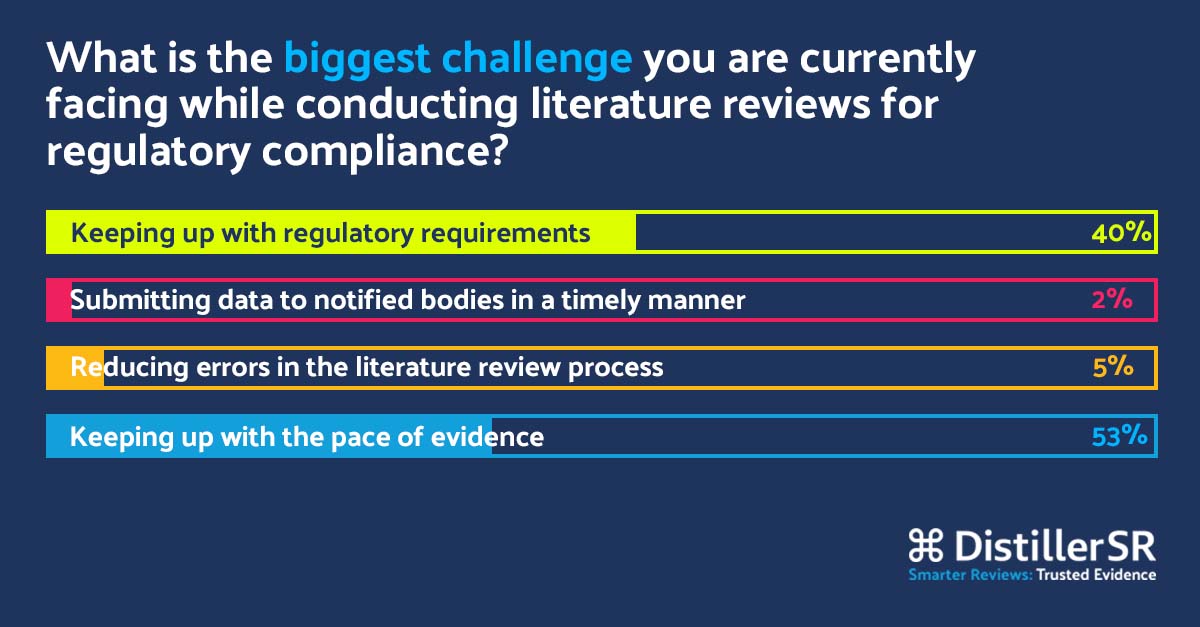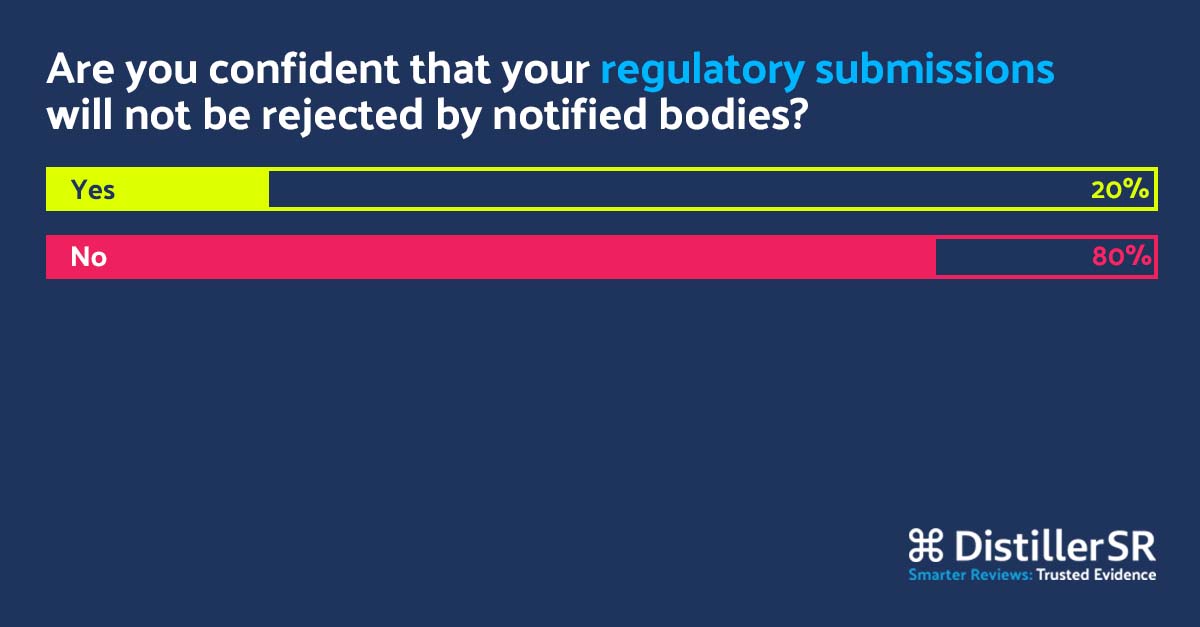In a recent webinar, DistillerSR customer Dr. Victoria Samonte, Medical Director of Global Medical Operations at Abbott Diagnostics and Dr. Bassil Akra, CEO and Founder at the AKRA Team GmbH were joined by Michelle Zaharic, CEO at MLZ Biotech Consulting and IVD Lead at RAPS Western Canada Chapter. They discussed how implementing automation can impact confidence in regulatory compliance submissions.
Q: Dr. Akra, what changes have occurred with the recent extension for the MDR and the IVDR, and how is it impacting the field?
A: The MDR and IVDR have been challenging for us for many years. Initially published in 2017, we hoped to be on track, but reality showed us the complexity and unpreparedness in transitioning from old to new legislation. Recently, more transparency about the lack of readiness among stakeholders prompted legislative action in Europe to protect healthcare systems. This wasn’t just about giving more time; it was a necessary measure due to significant challenges, such as the ongoing designation of notified bodies. Back in 2012, we had over 86 notified bodies, but now, new ones are still being designated every few months. The MDR and IVDR are comprehensive and complex, requiring over 100 guidance documents for clarification. The transition demands immense resources, and simply put, the necessary expertise isn’t readily available. The extension is not a cue to relax but a crucial period to prepare and ensure that all stakeholders can meet the new requirements effectively.
What is the biggest challenge you are currently facing while conducting literature reviews for regulatory compliance?
Q: Is there a concern that manufacturers might focus too much on clinical performance requirements at the expense of state-of-the-art assessments and literature reviews?
A: For IVDs especially, the depth of assessment and the experience both manufacturers and notified bodies have with performance evaluation requirements were not as established as in the medical device sector. Many manufacturers are still operating under the old directive’s mindset, applying the same principles and expecting success. While major manufacturers have adapted, challenges remain, especially with post-market performance follow-up and evidence for device claims. State of the art is becoming increasingly important, and it’s crucial that both sectors align their practices to ensure compliance and effectiveness.
Q: How do you see the evolution of the regulatory context moving from the IVD to the IVDR Dr. Samonte?
A: The transition from IVD to IVDR introduces significant challenges, particularly in the realm of clinical evidence. For in vitro diagnostic devices, establishing clinical benefit, performance, and utility is more complex due to their indirect impact on patient treatment decisions. The IVDR demands robust clinical evidence, but defining what constitutes “sufficient” quality and quantity remains a challenge. We rely on our experience with the MDR to ensure our evidence is robust, systematically gathered, and analyzed, despite the indirect effects of IVDs on patients.
Q: Dr. Samonte, how can automation and AI-enabled practices streamline literature reviews and maintain regulatory compliance?
A: Using automation and AI, such as keyword highlighting and flagging in our software, has significantly improved efficiency in reviewing vast numbers of articles. It allows the team to focus on critical analysis and synthesis of data rather than manual searching. This standardization of processes and the ability to easily identify and prioritize relevant literature have been key benefits of adopting such technologies.
Q: Do you have anything to add Dr. Akra?
A: It’s crucial to understand that automation alone doesn’t guarantee compliance. It’s about how you use these tools to ensure your evidence is robust and your search criteria are accurate and relevant. Automation can streamline processes and make them more efficient, but the quality and relevance of your data are what ultimately ensure compliance.
Are you confident that your regulatory submissions will not be rejected by the notified bodies?
Q: What has changed for you and your team Dr. Samonte since you implemented automation?
A: Since my team and I started using automation for our literature review processes, we’ve seen significant positive changes. Firstly, the amount of time and effort required for literature reviews, especially for regulatory submissions and clinical reviews, has greatly decreased. This efficiency gain meant we didn’t need as many resources dedicated to the initial stages of the review process. Instead, team members could concentrate on the more critical aspects, such as data analysis, synthesis, and compiling comprehensive summaries on performance and safety, as well as state of the art (SOTA) evaluations.
Another major improvement has been in the standardization of our processes. We’ve established standardized procedures for conducting literature reviews, making our literature searches reproducible and transparent. This structured approach, enabled by DistillerSR has been incredibly beneficial during audits and internal reviews. It allows anyone involved in the review process to clearly understand the methodology and assess the evidence used for various clinical assessments and summaries. Overall, the adoption of automation software has been a game-changer for us, streamlining our workflows and enhancing the quality and consistency of our literature reviews.
Q: How does automation support post-market surveillance and compliance with changing standards and practices, Dr. Akra?
A: Maintaining compliance means continuously monitoring the market and literature to ensure your products meet the current state of the art, standards, and regulatory expectations. Automation can make this process more efficient by providing timely updates and insights, reducing the manual workload, and enabling quicker decision-making. However, setting up these systems correctly from the start is crucial to effectively leveraging automation for compliance.
Q: What is your view, Dr. Samonte?
A: Beyond just product-focused reviews, it’s essential to use automation to monitor changes in diseases, conditions, and clinical practices related to the use of your devices. This comprehensive approach ensures that you stay informed about all relevant developments that could impact your product’s compliance and effectiveness.








